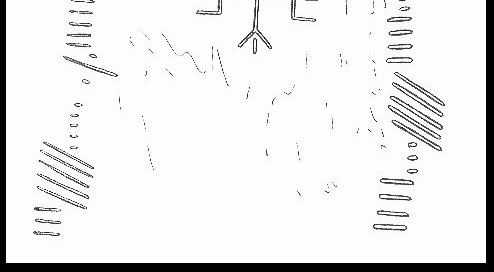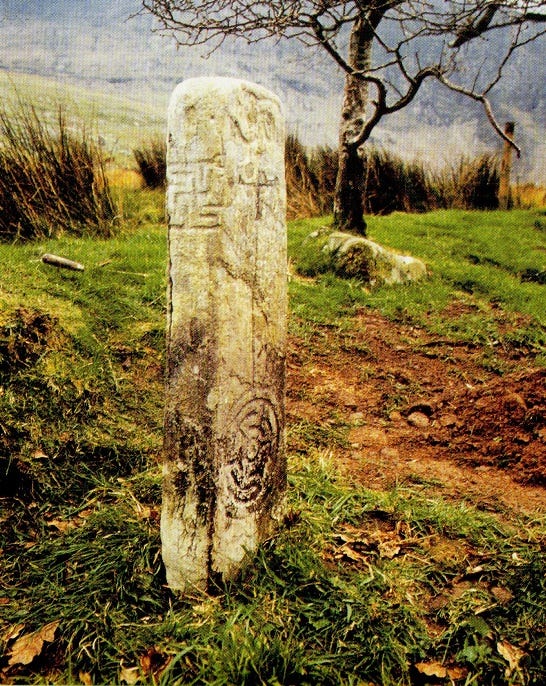Can We Trust the Authenticity of Any Early Christian Artefact
Just Because it "Looks like the Crucifixion…"
Case in point; this image is of the alleged ‘Christian cross’ on one of the Ballintaggart stones along the Dingle peninsula in Co. Kerry, Ireland. To me—without using evangelical eyes—it is a stylized bird and could be the Morrigan/Badh for all one knows.
There are thousands of such ‘Christian’ stones in Ireland that can't be carbon-dated. At some point, someone just said “they look Christian” and they became representations of the crucifixion.
The Irish state's past archeologists—particularly Maynooth academics and also professor of archaeology at NUI Galway, Etienne Rynne (1932–2012)—filled their research papers with statements such as 'for the glory of God' and so on when studying these antiquities. They were never objectively studied without this bias going as far back as the Royal Irish Academy. To claim the image above is that of the crucifixion of Jesus Christ is serious a leap of imagination.
A gallery of Irish rock art also deemed to represent the Christian cross:
Coolbuck Crannog, Lough Eyes, Co Fermanagh
Cathedral Hill, Co Armagh
Cloon West, Co. Kerry (Source: O'Sullivan & Sheehan 1996)
Cloon West, Co. Kerry - Anthony Weir










It is very hard to date stones. Runic symbols are Pan-European. In different places similar images may have different meaning. The cross / bird one could be anything from a place name, to a warding spell.
If they want to insist it is a Christian cross, then I guess the swastika engravings indicate that megalithic Irish were Nazis. The swastika is found in every part of the world: ancient Japan, India, China Europe Navajo in America. Often meaning wheel of life. People just see what they want to see. No further research needed.
The Ancient Church and Burial Ground at Kirkmadrine has some interesting 'Christian artifacts'. I took a detour there a few years ago and took a number of photos. At the time thinking that Mr Sheridan would like these. The vistas from there afforded a view to the Emerald Isle, albeit Northern Ireland. To the West the beautiful Glenluce and Luce Bay.
I was drawn by an inner sense (although quite why) that it may have been a ritualistic venue before a church even adorned the site. Many of the tombstones had masonic engravings and the interred seemingly well heeled. An interesting place.